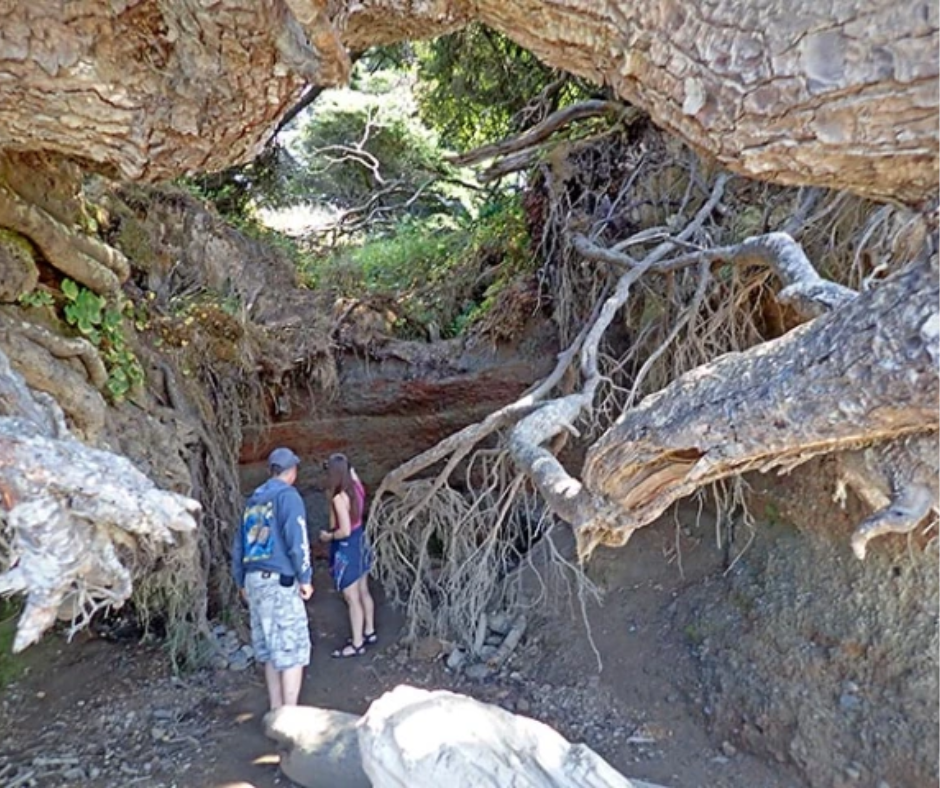The Resilient Wonder: Kalaloch Tree of Life
On the windswept coastline of Washington State’s Olympic Peninsula, nestled within Olympic National Park, stands an extraordinary tree that defies all logic and odds: the Kalaloch Tree of Life. This large Sitka spruce, seemingly suspended between life and death, clings to both sides of a steep gap in the hillside, its bare roots stretching across an empty space where the ground beneath it collapsed decades ago. How long it has been like this remains a mystery, but its perseverance has captured the hearts and imaginations of visitors from around the world.

Located above Kalaloch Beach near Kalaloch Campground, this tree is a testament to nature’s resilience. Getting there is easy for those exploring the Olympic Peninsula; the campground is right along Highway 101, the main road circling the peninsula. The closest town, Forks, is about 34 miles to the north. From the parking lot, a short path leads to the beach, and just north of the stairs, the Tree of Life can be found. It’s hard to miss—its roots hang in the air, seemingly defying gravity.

From the beach, most people are greeted by a surreal sight: the tree appears to be hanging on for dear life, its roots exposed, gripping the sides of the gap like fragile fingers. This dramatic display of survival is why it’s known as the Tree of Life. As the wind and water slowly erode the soil beneath it, the tree continues to stand tall, symbolizing perseverance in the face of constant adversity. Some even say its form resembles the legendary Tree of Life from mythologies, or even the one depicted in Avatar.

But for those brave enough to walk underneath it, the story takes on a new layer. Beneath the tree, you can see that its roots stretch far into the ground on both sides of the gap, offering more stability than the view from the front suggests. The exposed roots weave into the earth for nearly 12 feet, holding the tree in place despite the ever-shifting landscape. The gap itself was carved out by a small creek, formed in the 1960s as runoff from a nearby culvert near Kalaloch Lodge. This creek is the reason for the ongoing erosion that has created this fascinating spectacle.

Standing beneath the tree, the sheer scale of the roots and limbs supporting it becomes clear. The Sitka spruce, a type of evergreen, remains lush and green year-round, defying the stark, barren ground beneath it. Looking up, you can see its roots snaking down the walls of the gap, dangling into the empty space as if defying gravity itself. It’s a humbling experience to stand under such a symbol of resilience and wonder at its tenacity.

The beach surrounding the Tree of Life is just as fascinating. Driftwood covers much of the shore, and many visitors have taken to building structures from the scattered logs, adding a whimsical touch to the landscape. Beyond the driftwood, the wide sandy beach stretches out to the ocean, frequented by beachgoers, dogs, and the occasional seagull. Kalaloch Beach is one of the few places in Olympic National Park where dogs are allowed, making it a popular spot for dog owners.
If you plan to visit, make sure to get a park pass ahead of time. While there is a day-use parking lot, the pass booth is only open for a few hours each day, and the self-service system can be unreliable. Despite these minor inconveniences, visiting the Tree of Life is an unforgettable experience, offering a glimpse into the relentless power and beauty of nature.

The Kalaloch Tree of Life is more than just a tree. It’s a symbol of endurance, a reminder that even in the face of insurmountable odds, life finds a way to persist. It stands as a quiet sentinel, weathering storms, erosion, and time itself, offering visitors a chance to witness nature’s enduring spirit firsthand.



